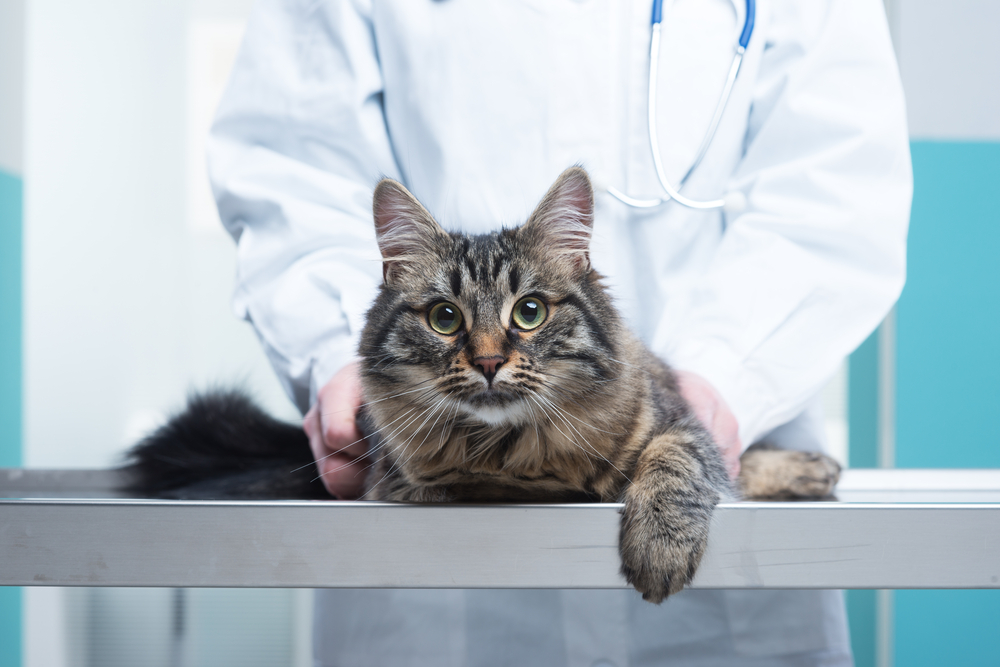

Bruising, petechia, and ecchymosis are all identified by skin or mucous membrane discoloration, typically due to injuries that lead to bleeding (hemorrhaging) under the affected area. More specifically, bruising is an injury to the skin, which causes blood vessels to rupture and the discoloration of tissue due to the presence of red blood cells; petechia is a small red or purple spot on the body caused by minor hemorrhaging; and ecchymosis is a purplish patch under the moist tissues of the body (mucous membranes) or under the skin. Petechia, bruises, or ecchymoses may appear suddenly or after a minimal injury.
Other than the skin discoloration or bruising of the mucous membranes related to hemorrhages, there are no specific symptoms associated with petechia and ecchymosis.
Although petechia, ecchymosis, and bruising often occur due to injuries, the following may also cause or make the cat more susceptible to this type of hemorrhaging:
Thrombocytopenia
Thrombocytopathy
Vascular disease
You will need to give the veterinarian a thorough history of your cat’s health, including the onset and nature of the symptoms. He or she will then perform a complete physical examination, specifically searching for the presence of lesions. Routine laboratory tests include complete blood count, biochemistry profile, and urinalysis.
Blood count results may reveal thrombocytopenia, a blood disease that is one of the most important causes of these hemorrhagic conditions. This is because platelets are essential cells for normal blood clotting, and a significant decline in platelet number may lead to hemorrhages throughout the body. To assess the blood clotting system, the veterinarian will measure the time it takes for the cat's blood to clot. A prolonged clotting time will warrant further investigation. Bone marrow samples are also taken to evaluate the bone marrow functions and diseases.
Biochemistry profile, meanwhile, may indicate liver or kidney disease, depending on the underlying disease. And urinalysis may identify immune-mediated diseases associated with hematuria and proteinuria.
Other laboratory tests include X-rays and ultrasounds. Abdominal X-rays to assess the liver and kidney size and abdominal ultrasounds to identify complications in other organs.
No specific treatment is available for petechiae, ecchymosis, or bruising; it solely depends on the underlying cause. However, in severe cases, your cat may need to be hospitalized, where he will be hydrated and possibly given a blood or platelet transfusion to overcome the crisis.
It is important you do not self-medicate the cat, as it may further exacerbate the problem. Consult a veterinarian and notify him or her if any untoward symptoms, such as subcutaneous hemorrhaging, should occur. Also, minimize the cat's activity level to avoid injury or trauma, which may lead to further bleeding problems.
Image: Stokkete via Shutterstock
 Paralysis-inducing Spinal Cord Disease in Cats
Myelopathy–Paresis/Paralysis in Cats
Myelop
Paralysis-inducing Spinal Cord Disease in Cats
Myelopathy–Paresis/Paralysis in Cats
Myelop
 Flea Control and Flea Bite Allergies in Cats
Flea Bite Hypersensitivity in Cats
Flea bite hype
Flea Control and Flea Bite Allergies in Cats
Flea Bite Hypersensitivity in Cats
Flea bite hype
 Plants That Are Used to Repel Cats
Plants That Are Used to Repel Cats
Pla
Plants That Are Used to Repel Cats
Plants That Are Used to Repel Cats
Pla
 Bacterial Infection (Mycoplasma, Ureaplasma, Acoleplasma) in Cats
Mycoplasmosis in Cats
Mycoplasma, acholeplasma, a
Bacterial Infection (Mycoplasma, Ureaplasma, Acoleplasma) in Cats
Mycoplasmosis in Cats
Mycoplasma, acholeplasma, a
 Regurgitation in Cats
When a cat's stomach contents (i.e., food) mo
Regurgitation in Cats
When a cat's stomach contents (i.e., food) mo
Copyright © 2005-2016 Pet Information All Rights Reserved
Contact us: www162date@outlook.com